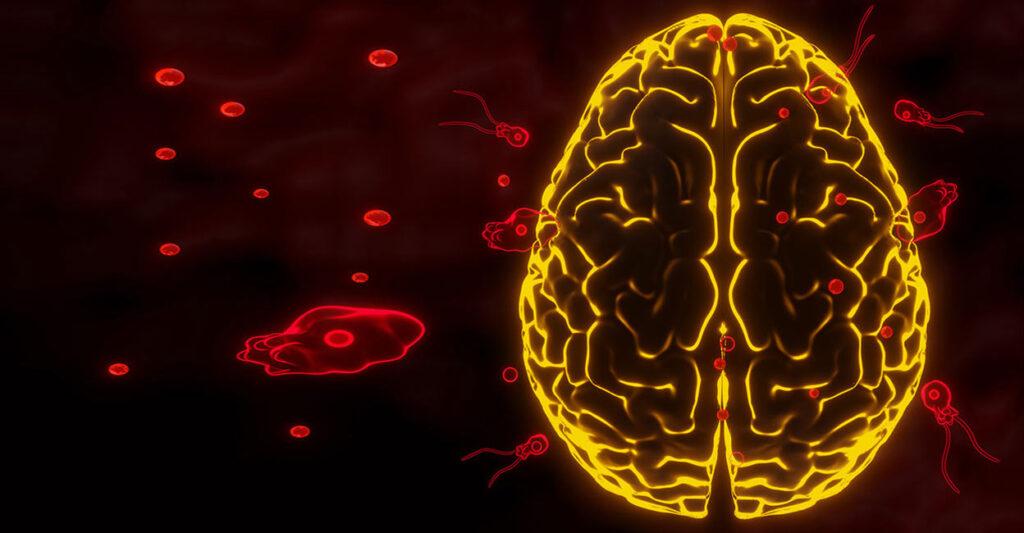
Introduction:
Naegleria Fowleri, commonly known as the “brain-eating amoeba“, is a single-celled organism that can cause a rare but devastating brain infection in humans. This microscopic amoeba is found in warm freshwater environments such as lakes, hot springs, and poorly maintained swimming pools. While Naegleria Fowleri infections are extremely rare, they have a high fatality rate, making it a cause for concern and scientific investigation.
Lifecycle and Transmission:
The lifecycle of Naegleria fowleri consists of three main stages: the cyst, trophozoite, and flagellate. In its cyst form, the amoeba can survive in harsh conditions and withstand chlorine levels found in treated water. When the environmental conditions are favorable, the cyst transforms into the active feeding stage called the trophozoite, which can propel itself using a whip-like tail known as a flagellum.
Naegleria fowleri is primarily transmitted when contaminated water enters the body through the nose. This can occur during activities such as swimming, diving, or using contaminated tap water for nasal irrigation or sinus rinsing. Once inside the nasal passages, the amoeba travels through the olfactory nerve and into the brain, where it causes a severe and often fatal infection.
This can occur during activities such as swimming, diving, or using contaminated tap water for nasal irrigation or sinus rinsing.
Symptoms and Diagnosis:
The initial symptoms of a Naegleria Fowleri infection are similar to those of bacterial meningitis, making diagnosis challenging. The incubation period can vary from a few days to two weeks. Early symptoms may include severe headache, fever, nausea, vomiting, and a stiff neck. As the infection progresses, symptoms rapidly worsen and may include seizures, hallucinations, confusion, and coma.
To diagnose a Naegleria Fowleri infection, doctors typically collect cerebrospinal fluid (CSF) through a lumbar puncture, which involves inserting a needle into the lower back to extract fluid from the spinal canal. Microscopic examination and DNA tests can confirm the presence of the amoeba.
Treatment and Prevention:
Treating Naegleria Fowleri infections is extremely challenging due to the aggressive nature of the amoeba and the limited number of effective antiparasitic drugs available. Currently, the primary drug used is an antifungal medication called amphotericin B, but its success rate remains low. The overall fatality rate of Naegleria Fowleri infections is over 95%, with only a handful of documented survivors.
Prevention is crucial in reducing the risk of Naegleria Fowleri infection. The following measures can help minimize exposure to the amoeba:
- Avoid swimming in warm freshwater bodies, especially during hot weather when water temperatures are higher.
- If swimming or engaging in water activities, use nose clips or keep your head above water to prevent water from entering the nasal passages.
- Properly maintain and chlorinate swimming pools and hot tubs to reduce the risk of contamination.
- Use only sterile, distilled, or boiled water for activities that involve nasal irrigation or sinus rinsing.
- Educate yourself and others about the risks associated with Naegleria Fowleri and its prevention strategies.
Conclusion:
Naegleria Fowleri remains an extremely rare but highly lethal amoeba that can cause a devastating brain infection in humans. While the chances of contracting an infection are minimal, the consequences can be severe. Understanding the lifecycle, transmission, symptoms, diagnosis, and prevention strategies is crucial in reducing the risk associated with this deadly organism. Ongoing research and public awareness efforts are vital in order to develop effective treatments and prevent future cases of Naegleria fowleri infection.


